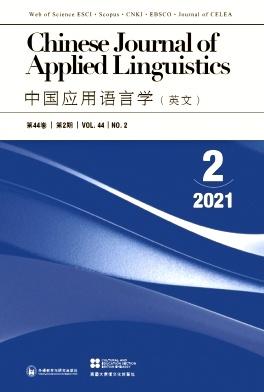二语写作中具有同伴反馈的学生参与:中国中学生的多案例研究
IF 1.1
4区 教育学
Q3 EDUCATION & EDUCATIONAL RESEARCH
引用次数: 1
摘要
摘要尽管在过去的几十年里,对同伴反馈和学生参与的研究越来越多,但在中学课堂上,对学生参与同伴反馈的关注却很少。基于多个定性数据,包括半结构化访谈、刺激回忆、原始、修订和最终写作草稿以及同伴讨论记录,本案例研究调查了中学生如何参与同伴在行为、认知、,并从反馈给予者和接受者的角度进行影响,以及哪些因素可能影响他们对同伴反馈的参与。数据分析表明:1)学生参与给予和接受同伴反馈在三个维度上表现出动态和复杂的互动;2) 学生在扮演反馈者和接受者的角色时,以不同的方式参与同伴反馈,表现出作为给予者的深度参与和作为接受者的肤浅参与,反之亦然;3) 研究发现,语言能力、自我效能、个性和教师指导等因素会影响学生参与同伴反馈。本研究从双向视角揭示了学生参与的多维特征,为教育从业者在二语写作课堂上提高英语学习者对同伴反馈的参与度提供了建议。本文章由计算机程序翻译,如有差异,请以英文原文为准。
Student Engagement With Peer Feedback in L2 Writing: A Multiple Case Study of Chinese Secondary School Students
Abstract While the past few decades have witnessed a growing body of research on peer feedback and student engagement, little attention has been paid to student engagement with peer feedback in the secondary school classrooms. Based on multiple qualitative data including semi-structured interviews, stimulated recall, original, revised and final writing drafts as well as peer discussion recordings, this case study investigated how secondary school students engaged with peer feedback in behavior, cognition, and affect from both the feedback giver’s and receiver’s perspectives and what factors may influence their engagement with peer feedback. Data analysis showed that 1) student engagement with both giving and receiving peer feedback demonstrated dynamic and complex interactions among three dimensions; 2) students were engaged with peer feedback in different ways while playing the roles of feedback givers and receivers, showing deep engagement as a giver and superficial engagement as a receiver, and vice versa; 3) factors such as language proficiency, self-efficacy, personality and teachers’ guidance were found to influence student engagement with peer feedback. By shedding light on the multi-dimensional characteristics of students’ engagement from bidirectional perspectives, the study offers suggestions for educational practitioners to improve English learners’ engagement with peer feedback in L2 writing classes.
求助全文
通过发布文献求助,成功后即可免费获取论文全文。
去求助
来源期刊

Chinese Journal of Applied Linguistics
EDUCATION & EDUCATIONAL RESEARCH-
CiteScore
1.50
自引率
0.00%
发文量
377
期刊介绍:
The Chinese Journal of Applied Linguistics (CJAL) (formerly known as Teaching English in China – CELEA Journal) was created in 1978 as a newsletter by the British Council, Beijing. It is the affiliated journal of the China English Language Education Association (founded in 1981 and now the Chinese affiliate of AILA [International Association of Applied Linguistics]). The Chinese Journal of Applied Linguistics is the only English language teaching (ELT) journal in China that is published in English, serving as a window to Chinese reform on ELT for professionals in China and around the world. The journal is internationally focused, fully refereed, and its articles address a wide variety of topics in Chinese applied linguistics which include – but also reach beyond – the topics of language education and second language acquisition.
 求助内容:
求助内容: 应助结果提醒方式:
应助结果提醒方式:


